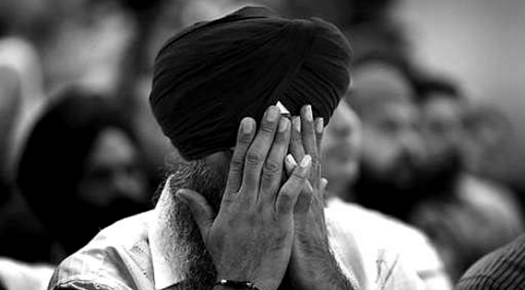
The first homicide victim of 2016 was a Sikh American in Fresno, California and police officials have been investigating whether the attack qualifies as a hate crime. Gurcharam Singh Gill, 68, was stabbed to death on January 1 at a departmental store where he worked and his murder is only the last in a string of attacks that have been carried out against Sikhs, possibly motivated by prejudice.
Gill’s death followed the beating of 68-year-old Amrik Singh Bal on December 26. Reportedly, Bal was waiting for a ride to a farm where he works when a group of young Americans inquired why he was standing on American soil before backing their car into him and beating him to pulp. Bal was hurt so severely that he had to be hospitalized immediately. Police officials have been investigating his attack as a hate crime too.
In 2013, 82-year-old Piara Singh had also been assaulted, for which his perpetrator, Gilbert Garcia, was sentenced to 13 years in prison in September last year. Garcia was charged for having orchestrated a hate crime and he eventually proved his investigators right by making Islamophobic comments in relation to the incident.
Islamophobic Americans have often mistaken Sikhs for Muslims since members of both communities grow their beards and wear turbans. After the San Bernardino massacre in December last year, Sikhs were increasingly subjected to a wave of anti-Muslim violence. Similar prejudices may have also caused the killing of six individuals at a gurudwara in Oak Creek, Wisconsin in August 2012 according to investigators.
Harjinder Singh Dhillon, board member of Fresno’s Sikh Institute, said there are as many as 30,000 Sikhs in the city, where the total population nears 516,000. Yet, anti-Sikh attacks with roots in Islamophobia continue to be carried out against those following Sikhism.
“I very much feel the anti-Sikh sentiment because sometimes those young people call me things like Osama bin Laden,” Dhillon said. “Young people are basically the ones who do that often. These kinds of incidents -- they can be prevented, but they happen.”
Dhillon also said that the Sikh community had made significant progress in combatting prejudice by organizing outreach programs and educating the youth about Sikhism.
“Many elementary schools came to the gurdwara [Sikh house of worship],” Dhillon said. “It is good to reach them when they are young enough to learn.”
He explained how Sikhs are mostly satisfied with the attentiveness of local law enforcement as well as the government in the way that they are dealing with anti-Sikh prejudice in California.
Rajwant Singh, chairman of the Sikh Council on Religion and Education, said, “The highest level of the government is communicating with us to make sure that the community feels safe. That is highly commendable.”
Dhillon however expressed disappointment in the level of religious illiteracy among Americans.
“When I was young in India, I knew every religion of the world. I think in India every kid who went to school they know about everybody,” he said. “But here, this is the only country in the world where people don’t know.”
On January 11, Melissa Rogers, head of the faith outreach office at the White House, visited a gurudwara in Rockville, Maryland to show support for Sikhs living in America. Her visit to Guru Gobind Singh Foundation makes Rogers the highest-ranking official from President Barack Obama’s administration to attend a Sikh get-together at a gurudwara.
“These kinds of incidents not only cause great grief among the people who are being attacked and the communities associated with it, but they threaten all of us,” Rogers told the 350 men and women present. “It is essential that all faith communities here and all over the world stand against hate-motivated violence.”
Photo Credits: New York Times
